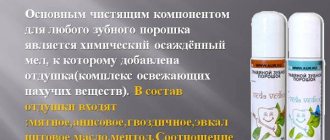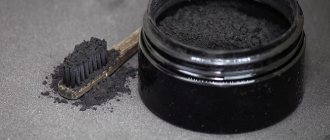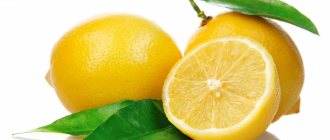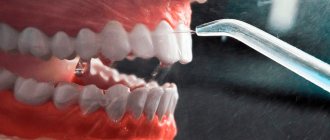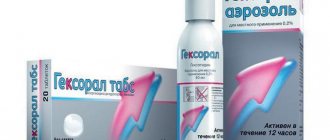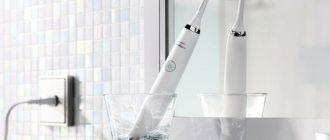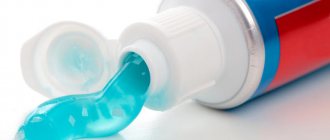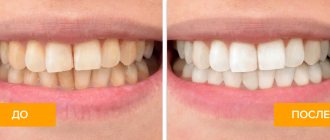1971
Just a dozen years ago, it was almost impossible to find tooth powder on the shelves of pharmacies and stores. It has been completely replaced from everyday life by paste, which is distinguished by its gentle effect.
But now tooth powder is gaining popularity again, proving its effectiveness.
The modern version of this highly abrasive product allows not only to efficiently clean crowns, but also to actively combat pathologies of dental and periodontal tissue.
Compound
chemically deposited chalk is used as the main component In addition, this product contains sodium bicarbonate , which acts as a preservative.
Otherwise, the composition of the product may differ depending on its intended purpose. Basically, the following components may be included in this product:
- white clay - acts as a soft abrasive, has a slight analgesic effect, reduces the symptoms of periodontal inflammation;
- sea salt – affects the acceleration of the process of soft tissue regeneration and actively fights bacteria;
- dry and ground medicinal plants . Soothe gums, reduce swelling, promote rapid healing;
- essential oils of mint, eucalyptus and other plants. They are powerful antiseptic and anti-inflammatory agents;
- nutmeg – increases the immune defense of the oral cavity and soothes inflamed tissue;
- ground cinnamon – has an antibacterial effect.
In combination with these components, the powders contain various flavors and fragrances.
Operating principle
The main active component of teeth cleaning powders is an abrasive. Unlike paste, the abrasive particles here have a coarser structure and pointed edges, like crystals.
When mechanically acting on the crown of a tooth using a product and a brush, small particles of the product seem to scrape off the pigmented layer and bacterial deposits, making the teeth noticeably cleaner and whiter.
It is difficult to achieve such an effect when using paste, since its effect is more reminiscent of polishing .
After removing the bacterial layer, the enamel pores open and the beneficial microelements included in the product penetrate through them. They spread into the deep tissues of the tooth, strengthening it.
What is
In most cases, the base of any teeth cleaning powder is chalk. However, not natural, which was previously used in a crushed state. Modern manufacturers use artificially produced chemically precipitated chalk.
It is this substance that has some features that allow it to be used to clean enamel without causing harm to it . This is a finely dispersed compound, the crystals of which have a very small size and different shapes - prismatic, spherical and diamond-shaped.
The basis of this component is calcium carbonate, in addition to which it also contains aluminum and iron oxides, magnesium carbonate and silicon dioxide.
Chemically precipitated chalk in tooth powder occupies almost the entire volume - about 98–99%. The remaining 1 or 2% are fragrances and various active additives to give the product certain properties - preventive or therapeutic.
These may include sea salt, dry clay, crushed dry medicinal herbs, soda, essential oils, useful minerals, etc.
For the effective use of tooth powder, watch the video:
Advantages
If you compare powder and toothpaste, you can note a number of advantages of the first, which are as follows:
- this product can restore the natural whiteness of enamel;
- during use, the powder not only polishes the tooth surface, but also thoroughly the pores and microcracks of the crown from bacterial plaque
- has high antibacterial activity , which reduces the risk of caries;
- additional components help strengthen the enamel;
- normalizes the acid-base balance of the oral cavity;
- loosens hard deposits , which are removed over time using a regular toothbrush;
- reduces symptoms of gum tissue inflammation: bleeding, swelling, pain.
Will an ultrasonic toothbrush be beneficial? Consumer reviews.
This article provides advice on which electric toothbrush to choose.
Follow the link https://zubovv.ru/krasota-i-uxod/zubnyie-pastyi/roks-otzyivyi-vidyi-preimushhestva.html for a description of who Rox toothpaste is suitable for and at what price you can buy it.
Recommendations and tips
- Limit the use of the powder to one or two doses per week (but no more than four).
- The brush should be soft to reduce the load on the enamel.
- It is not advisable to put it in the general packaging , but pour a little of the product into another container for one-time use.
- Brush movements should be softer than when brushing with paste - circular or vertical, without pressure.
- Store the product at temperatures up to 25 degrees. Avoid exposure to sunlight. You can pour it into a more convenient container. Choose the optimal location for keeping.
- Avoid contact with water. Limit air humidity to 70%.
- The correct individual choice of powder is especially important It is recommended to carefully read the instructions when purchasing a product and take into account compliance with GOST. It would be a good idea to consult a dentist.
- It is recommended to use the product if traces of nicotine or coffee .
- Use is not recommended for gum diseases to avoid tissue injury.
- It is recommended to use the powder twice during one toothbrushing procedure to achieve a better effect. But in terms of time, both periods must be kept within a time period of 3 - 5 minutes.
All about the possible causes of a green coating on the tongue and methods of treating the pathology. Read here when you need an opinion on oral sanitation.
Follow the link https://dr-zubov.ru/lechenie/zuby/mozhno-li-provodit-s-anesteziej-pri-beremennosti.html if you have a question about whether it is possible to treat teeth with anesthesia for pregnant women.
Negative impact
The listed benefits are observed only with proper use of the product. If used incorrectly, it can cause harm. Among the negative consequences, the following are most often noted:
- thinning of the enamel from exposure to coarse abrasive particles, which leads to increased sensitivity. Occurs as a result of frequent use of the product;
- if there are wounds on the gum line in the cervical area, cleaning with powder can lead to additional injury and growth;
- Basically, this product is packaged in flat jars with a leak-proof lid .
This is fraught with the development of bacteria, which during the procedure enter the oral cavity and provoke various dental pathologies. This problem can be avoided by using a product with a dispenser.
How is tooth powder better than paste and what harm can it cause to teeth?
Before we had toothpaste at our disposal, a special powder was used to clean enamel from plaque. It gained popularity back in the 18th century because it did an excellent job with its immediate task, and also helped freshen breath and prevent many dental problems. Later, the paste forced the product out of the market, but today you can increasingly hear that the composition of tooth powder is much harmless, and maybe even more effective than modern oral care products. Is this really so - we will understand further in this article.
Myths
Despite the fact that the powder has become popular among many people, some still hesitate to use it. Most often, this attitude develops due to the lack of detailed information on this product.
Most people refuse to buy, relying only on rumors and speculation. The main myths about this product include the following:
- The product has an aggressive effect on the enamel , beginning to destroy it after the first use.
Modern tooth powders contain substances ground to microparticles. Negative effects from them can only be observed with long-term and frequent use, for example, if you brush your teeth 3-5 times a day for 2 months. - The absence of emulsifiers and other substances characteristic of pastes reduces the cleansing effect. It's a delusion.
The product contains almost the same components, but in dried form. Their form does not reduce the effect of influence, and in some cases it even increases. In addition, the paste has a lower cleansing effect, as it has a soft consistency and a low concentration of cleansing components. - Tooth powders often cause allergies .
This statement is incorrect. The composition of the product is selected in such a way as not to cause harm to the human body. The number of cases of allergic manifestations when using the powder does not exceed the cases of allergies while using the paste.
How effective is Splat toothpaste: reviews from dentists and patients.
Read here how to whiten your teeth at home without harm to your health.
For what indications is Parodontax toothpaste without fluoride needed? See this https://zubovv.ru/krasota-i-uxod/zubnyie-pastyi/parodontax-podrobnyiy-obzor.html section.
Is it possible to brush children's teeth?
Tooth powder is an environmentally friendly and effective product, but it is too aggressive for the thin enamel of children’s teeth.
The use of calcium carbonate based powders is strongly discouraged for children .
You can use powders based on dried and crushed medicinal herbs - their abrasive effect on the enamel is much less, and they will not harm the teeth.
Thai and Indian plant-based tooth powders are also distinguished by their mild and gentle effect on teeth - they can be used by both children and adults with dental hypersensitivity.
Evolution
From the moment tooth powder appeared to the present day, the composition and quality of products have undergone significant changes.
The prototype of the modern remedy was ground shells and sandstone. After some time, they began to use ground chalk and egg shells to clean teeth instead.
The powder took on its modern form in the eighteenth century in England, where it was made from simple chalk and mint or anise oil .
Now manufacturers have learned to combine various components in powder that differ in their effects. This moved it from the status of a regular cleanser to a comprehensive one.
Write a comment
Valeria
May 29, 2021 at 7:18 am
I never gave preference to tooth powders, probably because I didn’t know about their properties, and it’s not convenient to use them. Who would have thought that it could have a beneficial effect on sore gums? But despite the fact that the powder has many advantages, I will still use toothpaste. I can’t switch to powder, it doesn’t foam and is kind of cloying.
Lena
May 31, 2021 at 8:07 am
I’ve been using tooth powders instead of toothpastes for more than two years now and I’m happy with everything. Firstly, you don’t breathe “ice” like after these thermonuclear pastes, secondly, it whitens and cleanses your teeth perfectly (I’m a coffee lover, so this is very important), thirdly, the powders are much cheaper. The only negative is the stains on the sink. There are slightly more of them than when using paste. I really like the powders and will continue to use them.
Dmitriy
July 11, 2021 at 5:13 am
At home I always use tooth powder. I constantly remembered the lines: “...and a fluffy towel, and tooth powder...”. One day I decided to try it, first I read about the pros and cons - I found out that before, they mostly used it, but then they stopped because it spoils the enamel. It’s just that before it contained chalk, which is an abrasive substance, but since then its composition has changed significantly. The disadvantages that remain are not significant for me.
Karina
September 7, 2021 at 03:16 pm
I once decided to try brushing my teeth with tooth powder instead of toothpaste. I didn't like it, it felt terrible. It is not easy to use, has an unpleasant taste and does not foam. And I love it when your mouth feels very fresh after brushing your teeth. There was no such sensation with the powder. I know many people prefer powder to toothpaste, but it's definitely not for me.
Anna
March 21, 2021 at 11:03 pm
On the recommendation of the dentist, I alternate the use of paste and powder. I noticed that this really gives a better result than using just one thing. It took me a while to get used to the powder. After using toothpaste, it’s a little uncomfortable that the powder doesn’t foam, but it’s all a matter of time and habit. Now I enjoy using both the powder and the paste. I visit the dentist much less often.
Anna
March 29, 2021 at 10:38 pm
I remember tooth powder from childhood, I really liked it then. But with the advent of pastes, it faded into the background and was gradually stopped being used. A couple of years ago, I accidentally came across Mint powder at a pharmacy and bought it. I alternate it with toothpaste—paste for two days, powder for a day. An excellent effect and the dentist noticed that the gums are less inflamed and there is no bleeding as before.
Lisa
July 5, 2021 at 12:24 pm
I think now few people use powder to clean their teeth. This happened at least due to the fact that now there are better products, and they cost less and do not cause as much inconvenience as powder. It is very inconvenient to use the powder; over time, no one has come up with packaging that would solve a number of inconveniences. In addition, after using the powder, tooth sensitivity increases.
Instructions
In order for the product to have only a positive effect, it must be used exactly following the instructions:
- For the procedure, you need to use a brush with medium- hard bristles. Before applying the powder, moisten it under running water.
- If the jar has a dispenser, use it to measure out a small amount of powder and apply it to the brush without touching its surface. If there is no dispenser, you must first dilute the required amount with water to a paste and then dip the brush in it.
- Cleaning begins from the anterior segment, gradually moving towards the last teeth.
- Cleansing is carried out for 5 minutes .
- After the procedure, you should thoroughly rinse your mouth with water and rinse the brush under pressure.
When using tooth powder, the following recommendations should be considered:
- Do not dip a wet brush into the total mass of the powder, as this can lead to its wetting and the formation of lumps;
- the powder must be selected correctly . To do this, it is advisable to consult a dentist;
- to enhance the effect, it is recommended to apply powder applications
- During the first time after use, the sensitivity of the enamel may increase. To eliminate this problem, it is recommended that after cleaning with powder, additionally treat the surface with a paste to reduce pain.
Cleaning method
- Diluting a small amount of the product to a mushy mass.
- Moisturizing your toothbrush.
- Apply the resulting mixture to the bristles.
- The actual cleaning process (no longer than 3 minutes). The brushing technique is identical to using toothpaste.
- Thoroughly rinse your mouth and brush again.
- Rinsing and drying the toothbrush.
Popular manufacturers
Nowadays you can buy tooth powders from different manufacturers, which differ in quality and cost. Separately, we can note the products of the following brands:
- Gum Gold. The main effect of this remedy is to relieve inflammation of periodontal tissue.
It contains more than 10 different medicinal plants that inhibit bacterial growth and activate regeneration processes. The average cost of this product is 300 rubles . - “Mint” from the Avanta .
The powder has a standard composition and is recommended for routine cleaning of crowns. Additional components gently soothe the gum tissue, reducing its sensitivity. This product is produced in Russia and has a low price - no more than 50 rubles. - “Whitening” from the Russian company Fitokosmetik .
The products do not contain fragrances, dyes or other chemical additives. Because of this, it is recommended for use by people suffering from allergies. The main effect of the product is crown whitening. The cost of this powder is on average 70 rubles .
How much does the product cost?
It is difficult to give a definite answer regarding how much tooth powder costs. Products with a simple composition and without additional additives will cost around 40-50 rubles per package. However, the assortment also includes more expensive products with additional strengthening, soothing or whitening effects - their price can vary between 200-300 rubles. The most expensive are foreign-made compounds, which are positioned to combat plaque in smokers. They can cost 500-600 rubles per package.
How to cook at home?
You can not only buy tooth powder, but also make it yourself at home. If you focus on the composition of a standard powder, you will notice that all the components present there are quite accessible for purchase.
You will need white clay, sage herb, eucalyptus or mint essential oil.
The production of powder is carried out according to a certain algorithm:
- First you need to prepare all the ingredients, as well as a small mortar and pestle. If they are not available, you can use a regular blender;
- Place all the ingredients in a grinding container, then grind them thoroughly.
The finished powder should be stored in a dry place away from sunlight and moisture. If necessary, other ingredients can be added to the prepared mixture, for example, thyme, bay leaf, oak bark , etc.
soda as an additive . But since it is an aggressive substance that can lead to negative consequences, it is still not recommended to add it to the general composition.
In this video, the blogger explains how to make a natural product yourself:
If you find an error, please select a piece of text and press Ctrl+Enter.
Tags tooth powder beauty and care
Did you like the article? stay tuned

